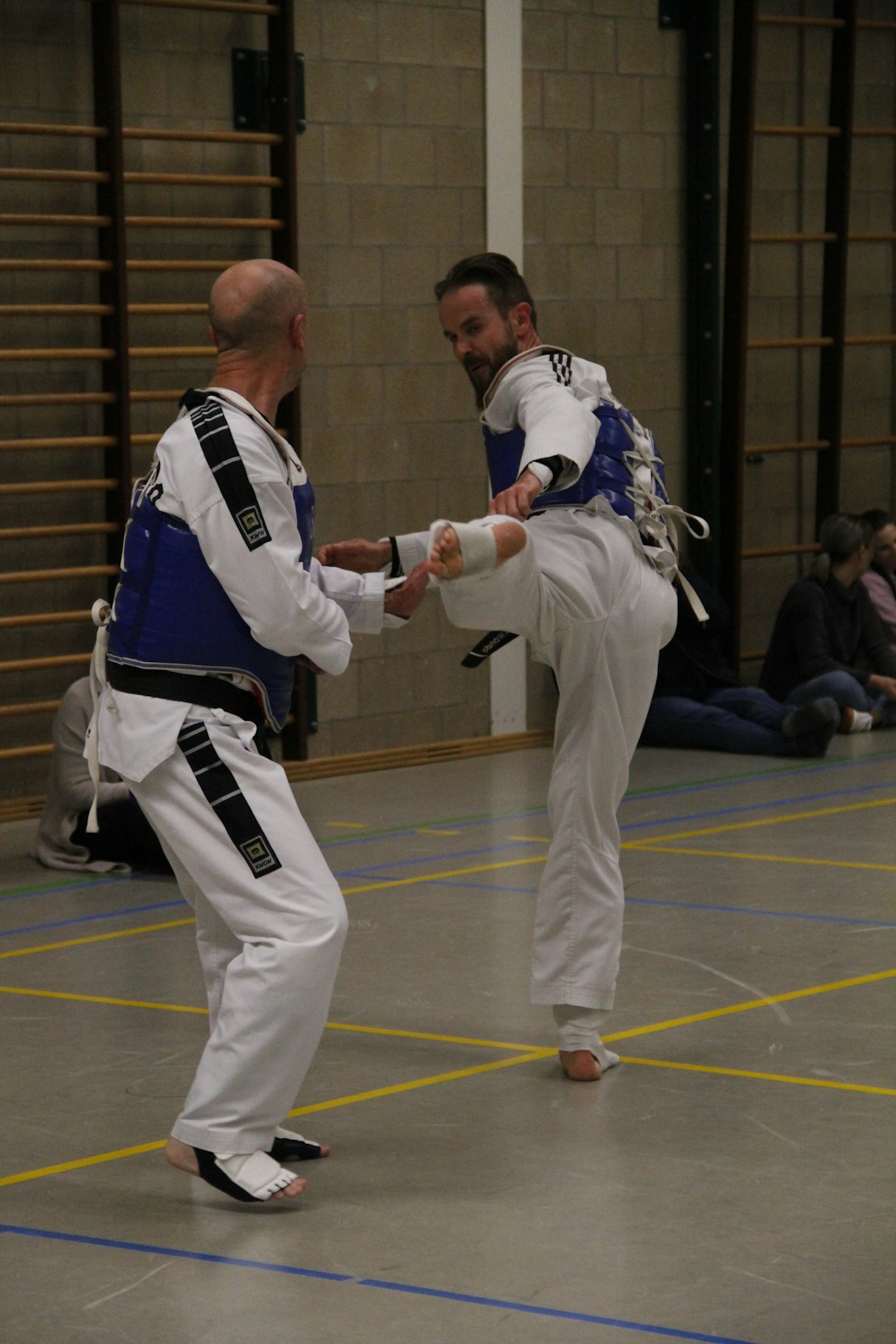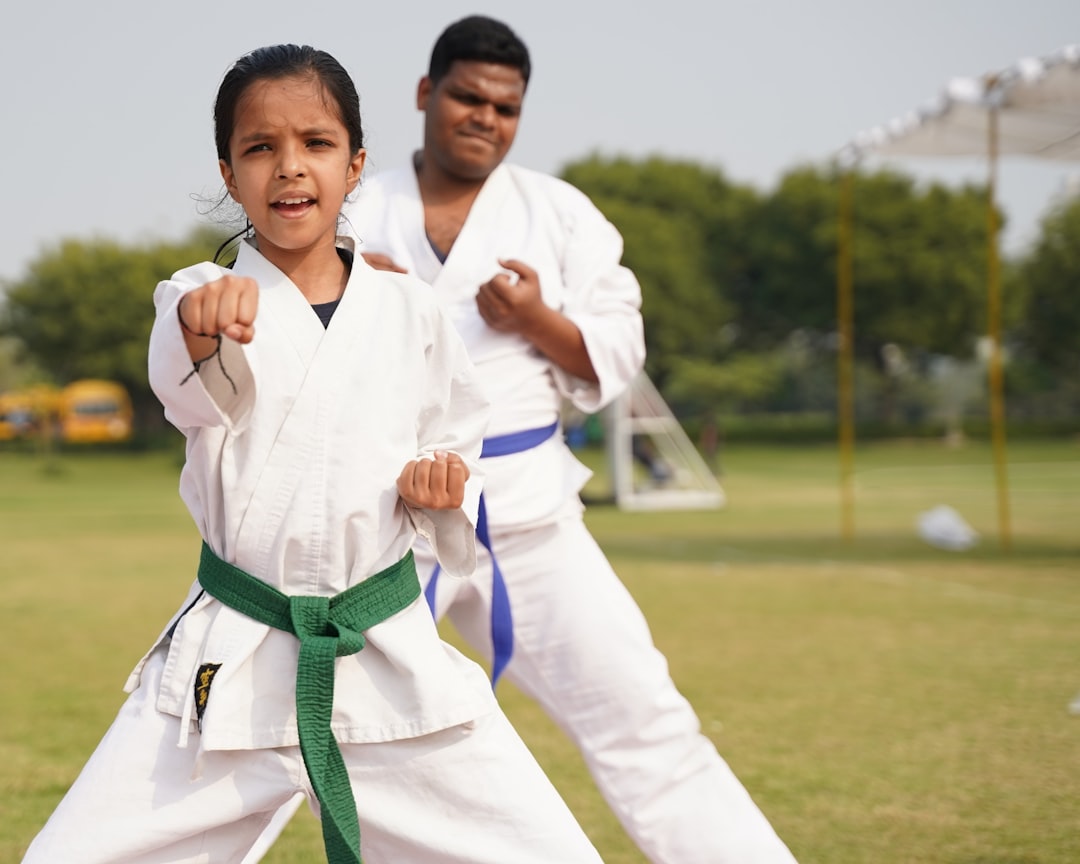Engaging in home-based karate practice requires adherence to traditional martial arts attire, specifically the karate gi. This garment, consisting of a jacket and trousers typically made from breathable cotton, is both practical for movement and a symbol of discipline. The jacket, known as an 'uwagi,' includes a belt, or 'obi,' which also indicates the practitioner's rank. Ideal for maintaining modesty and functionality at home, the karate gi can be easily purchased from specialized martial arts equipment retailers, ensuring proper equipment for effective practice. The evolution of the karate gi has seen it adapt to cater to both dojo and home training environments, with modern Gis offering durability, comfort, and varying weights. Maintaining your gi through regular airing and careful washing with gentle detergents is essential for its longevity, cleanliness, and upholding the discipline of karate practice at home. Proper care extends the life of your training attire and reflects the respect and commitment required in this martial art, whether you are practicing in a traditional setting or in your personal home gym—a testament to the enduring tradition of train karate from the comfort of your own space.
karate training, home practice attire, karate gi evolution, selecting karate gi, maintaining karate gear
Karate enthusiasts who train at home know that the right attire is key to an effective practice session. This article delves into the quintessential garb of karateka: the karate suit, commonly known as a Gi. We’ll explore its significance, the journey of its design through history, and offer guidance on selecting and maintaining your own Gi for optimal home training. Whether you’re a beginner or a seasoned practitioner, understanding the karate Gi is essential for anyone looking to train karate from the comfort of their own space.
- Understanding the Karate Gi: The Essential Training Attire for Home Karate Practice
- The Evolution of the Karate Gi: From Traditional Dojo to Home Training
- Tips for Selecting and Maintaining Your Own Karate Gi for Effective Home Training
Understanding the Karate Gi: The Essential Training Attire for Home Karate Practice

When training karate at home, the appropriate attire is crucial for both performance and respect for the discipline. The karate gi, a traditional and practical garment, serves as the quintessential training outfit for practitioners across the world. Characterized by its simple design, the gi typically consists of a jacket and trousers made of cotton or a similar breathable fabric, offering comfort and durability during practice. The top, known as the ‘uwagi’ in Japanese, features a belt – the ‘obi’ – tied around the waist, which not only holds the garment in place but also signifies the wearer’s rank within the martial art. Do you need attire that facilitates flexibility and movement while maintaining modesty and respect for the art of karate? The karate gi is your answer, designed to move with the body without hindering your techniques or movements during home practice sessions. Are you curious about how to obtain a gi for your home training? They are widely available through various retailers, both online and in physical stores that specialize in martial arts equipment. Whether you’re a beginner or an advanced practitioner, the karate gi is an essential component of your training, ensuring you’re ready to train karate at home with the proper attire.
The Evolution of the Karate Gi: From Traditional Dojo to Home Training

The Karate Gi, a garment synonymous with martial arts practice, has undergone significant transformations over time, reflecting the evolution of the sport from its traditional roots to modern home training. Originally, the Gi was a simple cotton kimono, designed to facilitate movement and provide a uniform for practitioners in the dojo. As karate gained popularity worldwide, the Gi became a symbol of discipline and respect for the martial art. Today, the Gi’s design has adapted to suit different training environments, including home practice. Are the modern Karate Gis different from the traditional ones? Yes, they often feature more durable materials and are available in various weights to accommodate both the rigors of formal dojo settings and the personalized space of home training. The contemporary Gi is tailored for functionality and comfort, ensuring that practitioners can train karate at home without compromising on the authenticity of their martial arts experience.
With the rise of online tutelage and at-home workouts, manufacturers have responded by offering Gis that cater to this shift in training habits. These modern Gis are designed with flexibility in mind, allowing for a full range of motion during exercises. Additionally, they often come in different sizes and cuts to fit all body types, providing comfort and support during intense practice sessions. Can home practitioners still maintain the tradition while using these new Gis? Absolutely, as the essence of the Karate Gi remains the same, emphasizing simplicity and functionality. The key adaptation is in the materials and design that now allow for the diverse needs of karateka training outside the traditional dojo setting. Whether in a formal martial arts environment or a personal home gym, the Karate Gi continues to serve as a uniform that symbolizes dedication to the practice of karate.
Tips for Selecting and Maintaining Your Own Karate Gi for Effective Home Training

When training karate at home, selecting the right karate gi is crucial for both your comfort and the authenticity of your practice. The traditional garment, known as a gi, serves as more than just a uniform; it’s an essential part of the martial arts experience. To ensure you get a gi that meets your needs, consider the material first. Is it made of cotton or a blend? Cotton gis are breathable and durable, ideal for absorbing sweat during intense training sessions. Next, check the weight of the fabric; a heavier weave provides more structure for formal practices, while a lighter one offers flexibility for daily home training. Additionally, verify the size and fit; a well-fitting gi won’t hinder your movements or cause unnecessary distractions. Does it accommodate your body type without being too tight or too loose? Remember, a properly fitted gi can enhance your performance and comfort during train karate home sessions.
Maintaining your karate gi is just as important as selecting one. Regular cleaning prevents odors and wear, ensuring your gi remains in top condition for each use. After training, shake off excess dirt and hang it up to air out. For deeper cleansing, wash your gi according to the manufacturer’s instructions. Avoid using harsh detergents or bleach, as these can damage the fabric and reduce its lifespan. Is your washing machine gentle enough for your gi? Machine washing on a cold, gentle cycle is typically safe, but make sure to secure any loose strings to prevent snagging. Once washed, reshape your gi while it’s still damp to avoid creases and wrinkles. Proper maintenance not only extends the life of your gi but also ensures you maintain the discipline and respect associated with the martial art you are practicing at home.
Practitioners around the globe who train karate at home understand the importance of donning the correct attire for optimal performance and respect for the discipline. The karate gi, a piece of traditional training wear, has evolved to suit modern home practice while maintaining its essential role in the martial art’s rich heritage. Whether selecting one’s first gi or maintaining it for sustained practice, knowledgeable choices and proper care are key to an effective home training regimen. As you continue your karate journey from the comfort of your own space, remember that the right equipment, like a well-fitted karate gi, is more than just clothing—it’s a symbol of dedication and tradition in the art of karate.
